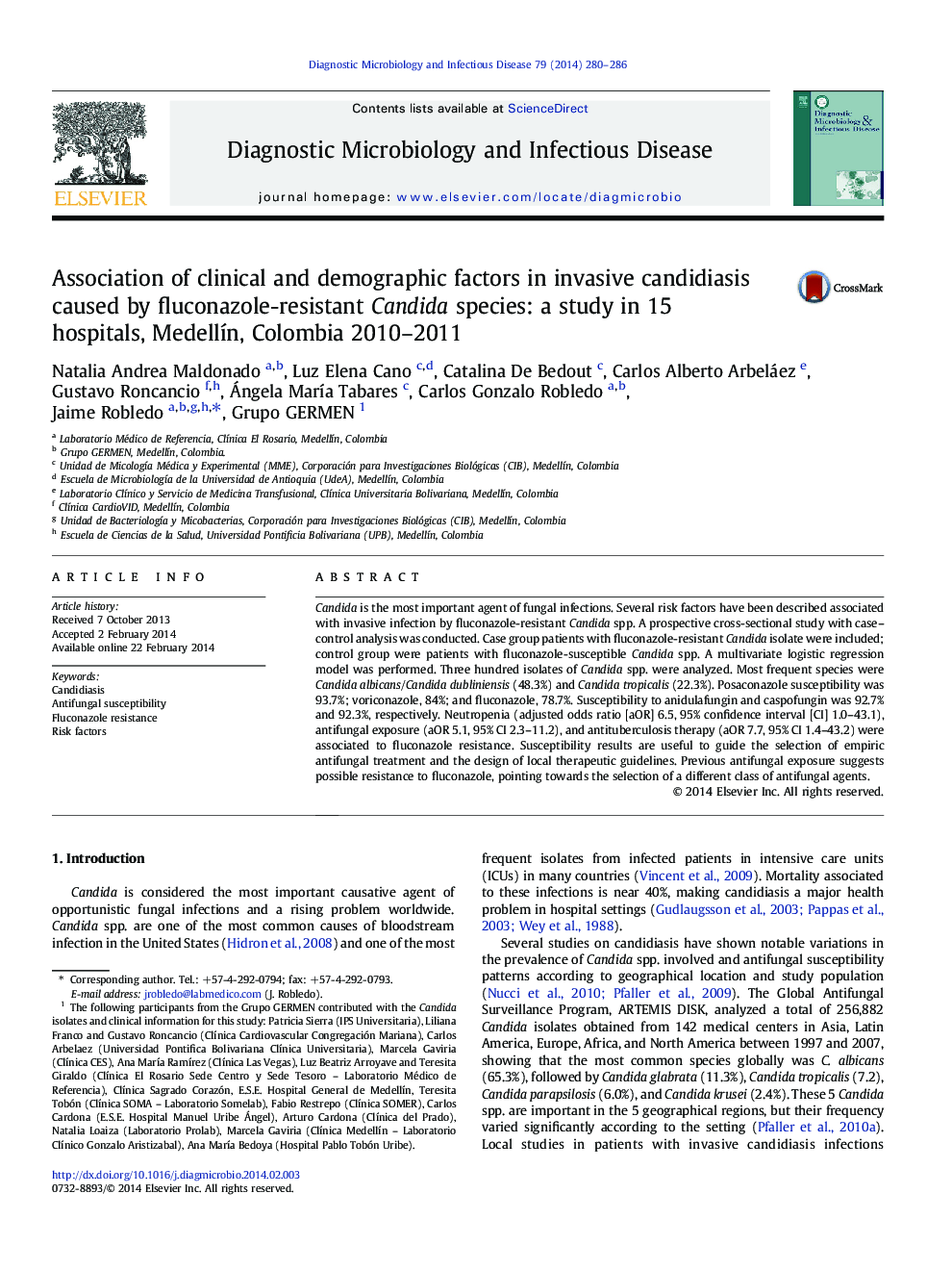| Article ID | Journal | Published Year | Pages | File Type |
|---|---|---|---|---|
| 6115865 | Diagnostic Microbiology and Infectious Disease | 2014 | 7 Pages |
Abstract
Candida is the most important agent of fungal infections. Several risk factors have been described associated with invasive infection by fluconazole-resistant Candida spp. A prospective cross-sectional study with case-control analysis was conducted. Case group patients with fluconazole-resistant Candida isolate were included; control group were patients with fluconazole-susceptible Candida spp. A multivariate logistic regression model was performed. Three hundred isolates of Candida spp. were analyzed. Most frequent species were Candida albicans/Candida dubliniensis (48.3%) and Candida tropicalis (22.3%). Posaconazole susceptibility was 93.7%; voriconazole, 84%; and fluconazole, 78.7%. Susceptibility to anidulafungin and caspofungin was 92.7% and 92.3%, respectively. Neutropenia (adjusted odds ratio [aOR] 6.5, 95% confidence interval [CI] 1.0-43.1), antifungal exposure (aOR 5.1, 95% CI 2.3-11.2), and antituberculosis therapy (aOR 7.7, 95% CI 1.4-43.2) were associated to fluconazole resistance. Susceptibility results are useful to guide the selection of empiric antifungal treatment and the design of local therapeutic guidelines. Previous antifungal exposure suggests possible resistance to fluconazole, pointing towards the selection of a different class of antifungal agents.
Related Topics
Life Sciences
Immunology and Microbiology
Applied Microbiology and Biotechnology
Authors
Natalia Andrea Maldonado, Luz Elena Cano, Catalina De Bedout, Carlos Alberto Arbeláez, Gustavo Roncancio, Ángela MarÃa Tabares, Carlos Gonzalo Robledo, Jaime Robledo, Grupo GERMEN Grupo GERMEN,
